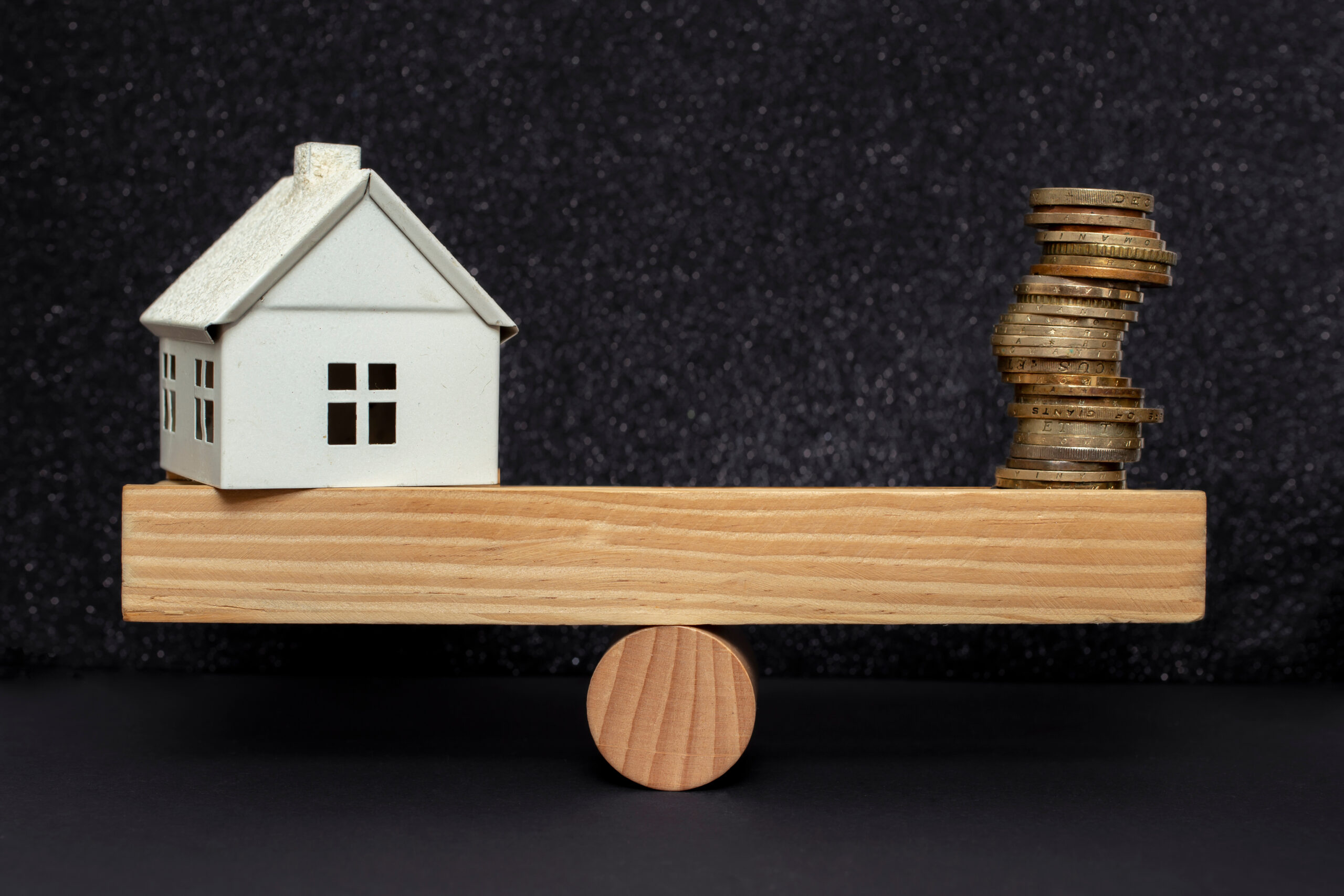How do you decide which properties work best for house flipping vs renting? What financial goals and market conditions should guide your house flipping vs renting strategy? Can a balanced portfolio truly combine the best of house flipping vs renting for sustainable wealth?
This blog breaks down the key distinctions between house flipping vs renting, helping investors understand how to match each strategy to their goals, risk tolerance, and market conditions. Flipping is ideal for generating quick capital and liquidity, especially in fast-moving markets with strong buyer demand. Renting, on the other hand, is about long-term stability—offering consistent cash flow, appreciation potential, and wealth that compounds over time. Knowing when to flip and when to hold is the key to growing sustainable real estate wealth.
The post explores how successful investors navigate the house flipping vs renting decision by analyzing property traits, local demand, and financial metrics like DSCR. It emphasizes that flips are best for speed and short-term gains, while rentals thrive on stability and scalability. The smartest investors use both strategies in tandem—leveraging quick profits from flips to fund income-generating rentals. Mastering house flipping vs renting allows you to build a diversified portfolio that withstands market shifts and produces lasting financial freedom.
Flipping and holding are two of the most common wealth-building strategies in real estate. But here’s the truth most new investors miss: not every property is meant to be a rental, and not every deal is meant to be a flip.
The best investors don’t chase every opportunity that hits their inbox. They know how to match the right strategy to the right property based on market conditions, numbers, and long-term goals.
That’s the difference between hobbyists and professionals. Getting comfortable with the differences between flipping vs. renting is an absolute must in real estate investing.
Once you understand which is best for any given situation, you stop guessing and start growing real, lasting wealth with intention.
Table of Contents:
Understanding the Core Purpose of Each Strategy
Flipping: Fast Cash and Capital Stacking
Renting: Cash Flow and Long-Term Freedom
Property Traits That Suit a Short-Term Flip
Property Traits That Suit a Long-Term Rental
Matching the Strategy to Your Goals
The Investor’s Mindset: Knowing When to Flip and When to Hold
Understanding the Core Purpose of Each Strategy
The smartest investors I know think like chess players, not gamblers. Every property is a piece on the board, and each move is determined by where you are in your portfolio and what the market is giving you.
In hot markets with high demand and low inventory, flipping can be a highly effective way to generate quick cash. When prices are high and buyers are motivated, quick-turn deals can build liquidity for future investments.
In cooling markets, or when stability is your goal, long-term rentals really shine. The consistent cash flow from well-selected properties provides insulation from volatility and gives you a steady path toward financial freedom.
When it comes to flipping vs. renting, both strategies work, but only when applied strategically and at the right time.
Flipping: Fast Cash and Capital Stacking
At its core, flipping is about speed and margin. You buy, improve, and sell within a short window, ideally six months or less.
With flipping vs renting, when you go the flipping route, your goals are purely financial. A good flip generates a lump sum of cash that can fund your next deal, pay down debt, or get rolled into long-term holds.
The big advantage here is quick liquidity.
When you flip properties, you don’t have to wait years for appreciation to occur. But once you sell, that income stops. It’s a one-time deal. If you’re not moving on to the next project, your money’s sitting idle.
Flipping is best when:
- You’re building capital fast.
- You want to reinvest in rentals or new construction.
- The current market supports quick resales and strong buyer demand.
Just remember: in flipping, discipline beats excitement. Over-improving, overpaying, or overestimating resale value can quickly erode profits, so it’s best to keep your expectations and emotions in check.
Renting: Cash Flow and Long-Term Freedom
Rentals, on the other hand, are about longevity and leverage. You’re not chasing lump sums; you’re building systems that pay you every month, no matter what. It’s stable, passive income you can rely on. You can think of flipping vs. renting like this: Flipping gives you cash once. Rentals give you cash for decades.
The key metric here is DSCR (Debt Service Coverage Ratio). This is a lender’s way of measuring if your rental income covers all your property expenses. A DSCR of 1.25 means you’re earning 25% more than your total mortgage, tax, insurance, and maintenance costs. Personally, I aim for 1.5 or higher on the properties I keep, because that’s how you stay profitable even in slower markets or during vacancy dips.
Property Traits That Suit a Short-Term Flip
Just because flipping is a quick cash move doesn’t mean every property is right for flipping. In the flipping vs. renting debate, there are a variety of factors to consider to determine whether you have a short-term flip or a long-term rental on your hands.
These are the property traits I tell other investors to look out for:
- Market Timing & Demand
- Property Condition & Upgrade Potential
- Exit Strategy & Timeline
1. Market Timing & Demand
A good flip depends on velocity. You need strong buyer demand and neighborhoods where renovated homes sell quickly for a flip to make sense.
These are some of the most ideal flip markets:
- Suburban areas near job growth, schools, and other emerging infrastructure.
- Communities with low inventory in need of new housing options.
- Places with buyer-friendly price points, typically below the local median home values.
Flipping luxury or high-end properties is tempting; everyone loves working with big, aesthetic properties, but the margins are thinner and the risks are higher. You want liquidity, and markets where buyers are ready and willing to move fast.
2. Property Condition & Upgrade Potential
Flips work best when you can add value quickly without structural nightmares. You don’t want to get into a project with a million problems and repairs that end up costing you more than the property is even worth.
Here’s what I look for:
- Cosmetic distress, like old kitchens, outdated floors, and bad paint.
- Strong bones. You need a solid foundation, a roof, and systems, such as plumbing and electricity.
- Clear visual transformation potential (think “before-and-after” appeal).
Avoid properties with major foundation, plumbing, or electrical issues unless you’re highly experienced or have access to reliable construction resources.
Remember: every extra month of rehab erodes your profits, and if you’re not careful, you could be left with a big net zero.
3. Exit Strategy & Timeline
Anytime you’re investing in real estate, always remember that your exit is everything.
Before you buy, you should already know:
- What similar renovated homes are selling for.
- How long they’re staying on the market.
- Your expected profit margin after accounting for all carrying costs.
Property Traits That Suit a Long-Term Rental
Just like you need to evaluate a potential property for flipping before you get involved, the same is true for rentals. There are several factors to consider when deciding between flipping vs. renting. For long-term rentals specifically, these are three of the main property traits to look out for:
- Location Stability
- Numbers That Work
- Low Maintenance & Management Needs
1. Location Stability
Long-term rentals thrive in markets with steady, predictable demand. You’re not chasing appreciation, you’re chasing occupancy. You need someone who is going to get into your property and stick around for several months, even years, generating a reliable profit for you.
Here’s an inside look at what I typically keep an eye out for with my rental investments:
- Strong job markets and economic diversity.
- Good school districts, public transportation, and other local amenities that encourage community engagement and activity.
- Low crime, low turnover, and reasonable property taxes.
These areas don’t always make headlines, but they make deposits in your account every month. These are the exact property traits long-term renters are looking for.
Another key fact to keep in mind in the great flipping vs. renting debate: If flipping is about chasing hot zones, rentals are about betting on consistency.
2. Numbers That Work
A good rental property is all about math. It’s not luck or magic.
It starts with a solid DSCR and ends with a realistic view of all expenses, including the mortgage, taxes, insurance, management, maintenance, and reserves.
Here’s the golden rule: If it doesn’t cash flow today, it’s not a deal. Period.
You can’t bank on appreciation because it may not always be there. You can’t hope tenants cover losses, because in many cases, they won’t. Your rental must be profitable from day one, or you’re just speculating, not investing.
Savvy investors also use the BRRRR Method (Buy, Rehab, Rent, Refinance, Repeat):
- Buy undervalued.
- Rehab strategically to raise the value and rent.
- Rent for strong DSCR.
- Refinance to pull out initial capital.
- Repeat the process using the same money.
That’s how you scale from one door to ten without constantly injecting new cash or pulling from your savings or other investment funds.
3. Low Maintenance & Management Needs
Long-term wealth depends on sustainability.
Choose properties with durable materials, efficient systems, and minimal upkeep. Avoid overcomplicated amenities that become repair nightmares.
Good rental candidates are homes you can manage from a distance without constant phone calls or check-ins.
If the property would stress you out as a landlord, it’s not truly passive income.
Matching the Strategy to Your Goals
The question every investor should ask: What do I actually need right now, cash or consistency?
- Assessing Your Financial Position
- Considering Your Risk Tolerance
- Balancing Your Portfolio
1. Assessing Your Financial Position
If you’re early in your career or need liquidity, flipping might be your best move. You can stack cash fast, pay down debt, and fund future long-term investments with your profits.
If you already have capital or a steady income, holding rental properties can help build generational wealth. It’s slower, but it compounds in ways flips never can.
Think of flipping as sprinting and renting as marathon running. They’re different strategies, but you need both if you want to have a chance at winning the race.
2. Considering Your Risk Tolerance
Flips carry short-term risk. I’m talking about unpredictable timelines, higher material costs than you may have expected, and fluctuating buyer demand.
Rentals carry long-term responsibilities, like tenant management and property maintenance.
If you can stomach volatility, flipping can supercharge your growth. If you value stability and a steady income, focus on rentals. The decision between flipping vs. renting depends largely on your financial position, the market, and the level of risk you’re willing to take.
3. Balancing Your Portfolio
A healthy portfolio isn’t all fast flips or all slow holds. It’s a balancing act.
Use your flips to fund your rentals. Let your rentals stabilize your flips. The cash from one feeds the other.
When you view both as complementary, not competing, you stop chasing trends and start compounding results.
The Investor’s Mindset: Knowing When to Flip and When to Hold
The difference between amateurs and pros isn’t how many properties they own, it’s how well they think.
Career flippers often ask, “What can I make on this deal?”
Long-term investors ask, “What can this deal make for me over time?” The best investors ask both and choose based on their goals, ultimately balancing the short-term hit with the long-term gain.
Conclusion
There’s no one-size-fits-all play in real estate. Every deal is different. Every investor’s goals are different.
Flips give you the speed and capital to scale. Rentals give you the stability you need to continue investing and growing your portfolio.
The smartest investors use both, strategically, building momentum in the short term and wealth in the long term.
Don’t chase every deal like it’s the same. Match the property to your goal, the goal to your market, and the market to your strategy.
That’s how you stop guessing, start compounding, and build a portfolio that lasts through any market cycle.




